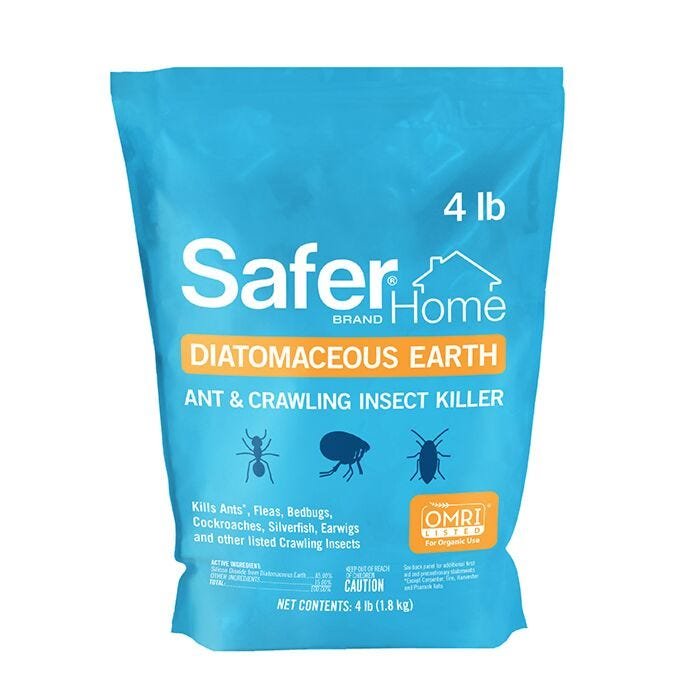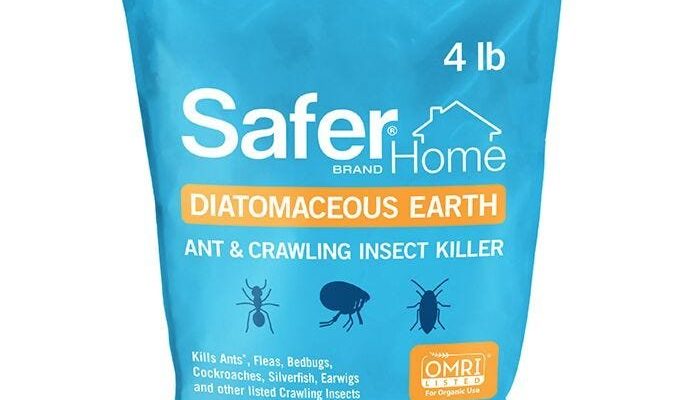
Diatomaceous earth is like a superhero in your garden arsenal, ready to fight against inchworm crawling. It’s made from the fossilized remains of tiny aquatic organisms called diatoms, and it works by damaging the exoskeleton of insects. Imagine sprinkling a fine powder that’s harmless to humans and pets, yet deadly to those crawling nuisances. Sounds appealing, right? Let’s dive into how you can effectively use diatomaceous earth to protect your plants from inchworms while keeping your garden healthy and thriving.
What is Diatomaceous Earth?
Diatomaceous earth is a natural, non-toxic powder that comes from the remnants of microscopic algae. When you look at it under a microscope, it resembles tiny shards of glass. It’s not just a pretty sight; this texture is what makes DE effective against pests like inchworms. The sharp edges of the particles damage the insects’ protective outer layer, leading to dehydration and ultimately death.
You might be wondering how this all works in practice. Imagine doing a little gardening with a sprinkle of fine sand that, instead of being irritating, is actually helping keep your plants safe. When inchworms crawl over this powder, it’s like walking on a bed of nails for them. They lose moisture quickly and cannot survive. Here’s the kicker: while it’s tough on pests, it’s safe for humans, pets, and beneficial insects when applied correctly.
How to Apply Diatomaceous Earth Against Inchworms
Applying diatomaceous earth is pretty straightforward. Start by choosing a dry day, preferably when there’s no wind. This will help the powder stay in place. You can use a duster or simply sprinkle it by hand, but make sure you’re wearing a mask to avoid inhaling any dust.
1. Target the Right Areas: Focus on areas where you’ve noticed inchworms or potential hiding spots, like under leaves, in cracks, or near the base of plants.
2. Create a Barrier: You’ll want to create a barrier around your plants to deter inchworms from entering. A thin, even layer is ideal; think of it as a “no-entry” sign for these pests.
3. Reapply After Rain: Since water can wash away diatomaceous earth, you’ll need to reapply it periodically, especially after heavy rain. Keeping a regular schedule will make your defense even stronger.
You might be curious about how much DE to use. A light dusting is often all you need. Aim for a thin layer; too much can actually repel beneficial insects, which we definitely want to keep around!
Benefits of Using Diatomaceous Earth
Diatomaceous earth is gaining popularity for many reasons, especially among gardeners who prefer natural solutions. One of its biggest advantages is that it’s effective against a wide range of pests. Inchworms are just one of many—DE also tackles aphids, beetles, and even fleas!
Another great perk is that DE doesn’t have harmful chemicals, making it safe for edible plants. You can use it on vegetables and herbs without worrying about harmful residues. Here’s why this matters: by using DE, you’re not only protecting your plants but also promoting a healthier ecosystem.
Additionally, diatomaceous earth acts as a preventive measure. Sprinkling it around your garden can help deter not just inchworms, but other pests as well, cutting down the chances of future invasions. Think of it as a shield for your plants, naturally fortifying their defenses.
How Long Does it Take to Work?
You might wonder how quickly you can expect results after applying diatomaceous earth. While it doesn’t work like chemical pesticides, which can kill insects almost instantly, DE does have its own speed. Typically, you should start noticing a reduction in inchworm activity within a few days.
The effectiveness can vary based on factors like humidity and temperature. In dry conditions, DE works faster, while high humidity can impede its ability to desiccate pests. This is why it’s essential to monitor your garden after application. If you’re not seeing the results you hoped for, it might be time to reapply or check for other pest issues.
One thing to remember is that DE isn’t a one-time fix. It’s part of an ongoing effort to manage pests in your garden. Regular checks and reapplications can help keep inchworms and other pests at bay—kind of like routine maintenance for your car!
Precautions When Using Diatomaceous Earth
While diatomaceous earth is a fantastic pest control option, there are some precautions you should take to ensure it’s effective and safe. First, always use food-grade DE when treating your garden. Industrial-grade DE is used for different purposes and can be harmful to humans and animals.
Next, avoid applying DE during windy days. You don’t want the powder blowing into your face or your neighbor’s yard. Additionally, be cautious about applying it directly on flowering plants. While it’s safe for most plants, you want to avoid harming beneficial pollinators like bees when they visit.
Lastly, remember to keep your pets away during application. While DE isn’t toxic, it’s best to avoid any unnecessary inhalation or ingestion. Once the dust settles and the application is complete, your furry friends can safely return.
Comparing Diatomaceous Earth with Other Pest Control Methods
You might be weighing your options when it comes to pest control. Aside from diatomaceous earth, there are chemical pesticides, traps, and even natural predators like birds and beneficial insects. Let’s take a quick look at how DE stacks up against some of these alternatives.
– Chemical Pesticides: These can be effective but often have harmful side effects for humans, pets, and beneficial insects. Plus, chemicals often wash away with rain, needing reapplication.
– Traps: Sticky traps can catch some pests, but they don’t provide a long-term solution. Plus, they require regular checking and can become full or ineffective.
– Natural Predators: Introducing beneficial insects like ladybugs can help control pest populations, but they may not be available everywhere, and it takes time for them to establish.
Diatomaceous earth offers a middle ground—it’s effective, eco-friendly, and doesn’t require you to introduce new species to your garden. Plus, it’s easy to apply and accessible for most gardeners.
Using diatomaceous earth against inchworm crawling is a smart choice for anyone looking to protect their garden naturally. With its simple application and effective results, DE can become your go-to solution for managing not just inchworms, but a variety of other pests too.
So next time you spot those sneaky inchworms munching away, grab that bag of diatomaceous earth and start sprinkling. You’ll be amazed at how a little powder can make a big difference, keeping your plants healthy and thriving. Remember, a healthy garden is all about balance, so treat pests wisely, and enjoy the beauty of nature around you!

